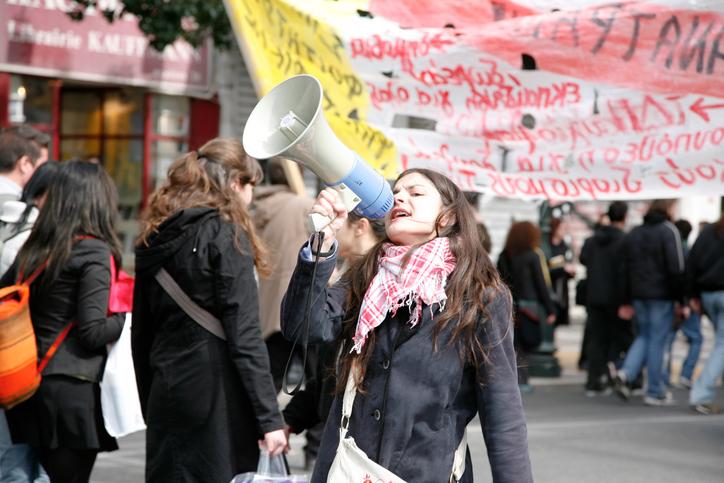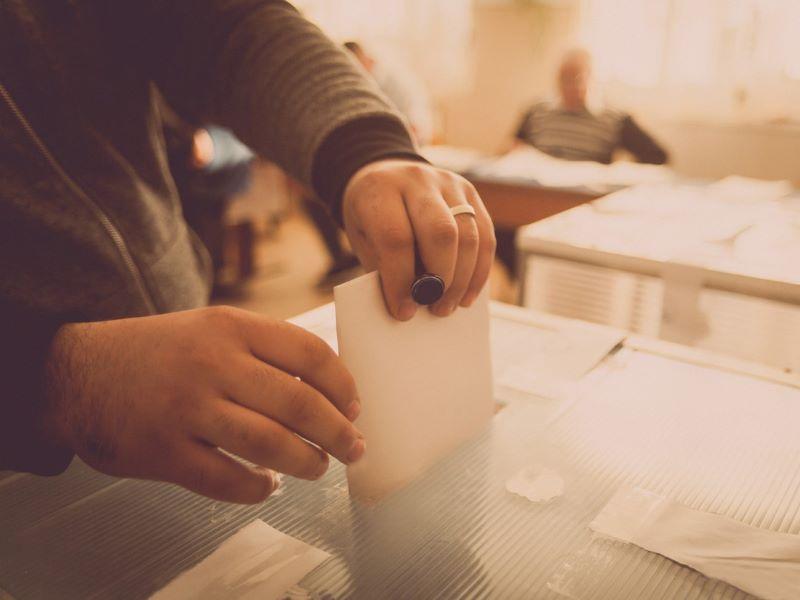
Changing campus protests from disruptions to learning opportunities

After a turbulent fall semester, students and administrators across the US are wary of what the new semester will bring. Administrators we spoke with said they spent as much as 75 per cent of their time during the last term managing conflicts about the war in Israel and Gaza.
To prepare for this semester, many schools have developed forums in which students and faculty can talk about the issues. Will airing the grievances more civilly prevent further protests, rallies, graffiti, sit-ins and office occupations? We don’t think so.
As leadership consultants working in higher ed, we believe that many schools are missing an important opportunity in the recent instances of campus unrest, one that requires a different understanding of the protest themselves. Instead of seeing these protests simply as students expressing themselves – something to be endured and managed – we propose seeing them as significant educational openings for the entire campus to become a learning laboratory.
Protests are an important part of learning to participate in democracy. Students, in forming an opinion and standing up for their beliefs, are perhaps for the first time learning to use their voices and take a stand for change. And yet, while protests garner attention for people and causes, and offer students catharsis of self-expression and feelings of unity with like-minded classmates and faculty, they alone don’t teach students leadership or influence.
Generic administrative responses to disruptive student protests start with addressing security concerns and providing adequate messaging to ensure that students, parents and university supporters feel safe. Attempts to create safety, while necessary, are likely to offend some constituencies and create backlash, as happened this fall at several east coast schools, with students perceiving safety measures as repression.
Meanwhile some administrations take a moral position and end up increasing polarisation between themselves and students. Wesleyan president Michael Roth, for example, was accused by Wesleyan Students for Justice in Palestine of “blatant disregard, placation and abstracting of atrocities” after he denounced the 7 October Hamas attacks. Meanwhile, others get caught in a self-perpetuating loop of responding to grievances only to provoke further grievances from other constituencies.
- Resource collection: Encouraging behaviour change on campus and beyond
- Respectful provocation: the university skill for our times?
- Spotlight guide: Dealing with division - the polarised university
Alongside messaging to the community, presidents and student affairs staff will often meet with students to listen to their concerns and demands. These listening sessions might result in students feeling heard, but just as often they can leave them feeling amped up at the lack of immediate action and appealing to faculty to support them in their outrage. Regardless, the listening mostly ends there, with the students wondering if their administrators actually care about their concerns. This only furthers a classic generational divide.
Conversely, when higher ed administrators respond to student demonstrations in ways that assist them in becoming true leaders, it can help the entire institution move through and beyond the unrest. In addition to expressing their right of free speech, students who want to make a difference need to learn how to bridge to authority and engage in the laborious process of negotiating change with those who hold differing points of view. They need to familiarise themselves not only with administrative concerns that as students they might not be aware of, but also with the rigour of driving institutional change.
We suggest an approach that changes the dynamics of student unrest. It begins with skilled staff and faculty members coaching students in a post-rally/protest/sit-in forum focusing on their next steps. The volunteer staff and faculty, who we’ll refer to as educators, would ideally coalesce in advance of and in preparation for activist activity, and must pledge to give up partisanship in order to be effective in their goals, which include: clarifying the student group goals, authorising assertive students into formal leadership roles, assisting in creating smaller teams and helping students communicate their points effectively. Instead of merely listening to or defending against student accusations, the educators need to remind students that true change — as opposed to riding an emotionally charged wave of discontent — requires successful interactions with university administrators and potentially members of the board of trustees.
Since students’ list of demands put to institutions generally range from reasonable, such as acknowledging harm and pledging solidarity, to ungrounded, for example the immediate divestment of all funds loosely connected to a perceived aggressor, the educators could help student groups establish what they hope to accomplish and determine their negotiable and non-negotiable needs. They can also help them by role-playing negotiations and choreographing how to work as a small team when facing institutional leaders.
The educators also have learning tasks. From the beginning of the laboratory, they must create a safe holding environment for students to emote and learn. They need to work with the administration to determine who will negotiate with the students, develop a plan of engagement and clarify which forms of communication and address are acceptable, which are destructive and what the consequences will be when those boundaries are transgressed. This includes developing non-inflammatory responses to provocative behaviour and verbal attacks, and keeping negotiations on track. To master this ability to create and maintain a safe environment, we encourage the educators to role-play scenarios among themselves.
Institutional leaders should conceive of this laboratory as an iterative process that allows for taking small, satisfying steps for both sides, then regrouping to review progress. The educators’ most crucial role, in addition to holding the space for student frustration, hurt and misunderstanding, is to help them analyse what did and didn’t work in the engagement with leadership. More of the community can join in, including chaplains and student advisers, who can bring further coherence to student groups and help them plan for the next round of engagements.
Presidents have an important role to play, especially if they can avoid stepping into the role of chief negotiator. They can hold the radical position of insisting that students learn the skills and actions to be effective change agents. They can hold the students accountable to their own best ideals and aspirations. They can push activists to go beyond the satisfactions of expressing outrage and into a learning process that builds bridges to authority and those who think differently from them.
These recommendations are not just conceptual: they have been effective with a number of our clients, which range from small liberal arts colleges to large research-focused R1 universities. We can learn from the unrest. When students have a chance to advocate for their vision of change with college administrators, and to participate in a forum that helps them learn the difference between effective and destructive communication in a supportive environment, they gain skills that will be useful to them on a personal, professional and civic level. Presidents and student affairs administrators are freed of the burden of being on the same side or in opposition to the student body, as everyone is equally engaged in the tasks of learning.
Blair Glaser and Richard Nodell are independent higher education consultants.
If you would like advice and insight from academics and university staff delivered direct to your inbox each week, sign up for the Campus newsletter.


